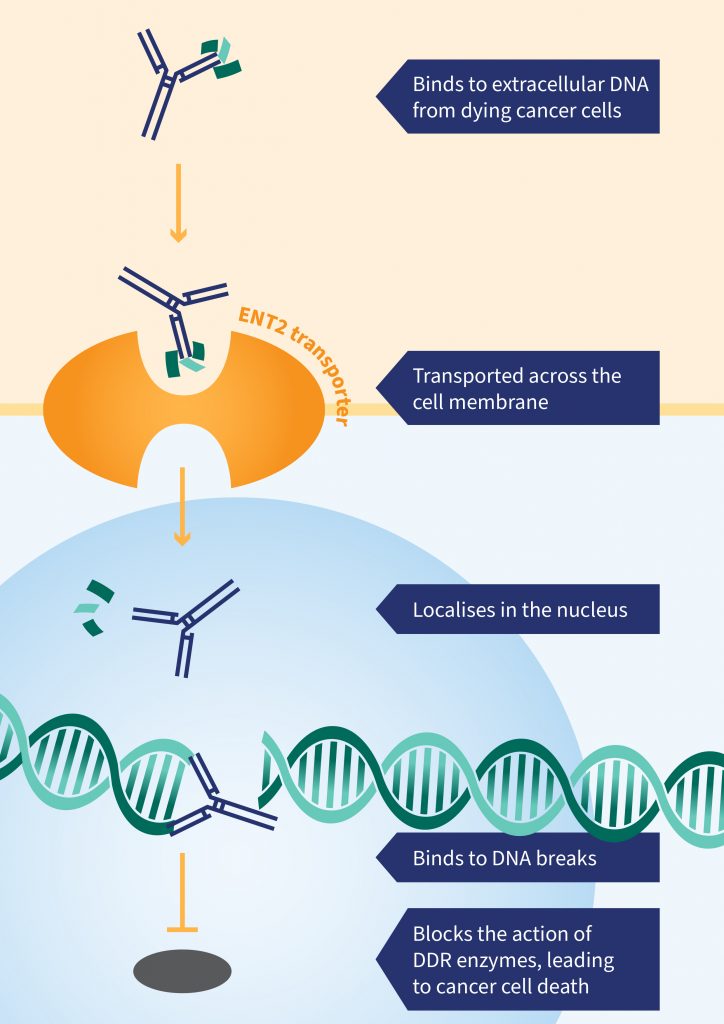Cancer Targeting
Deoxymabs are attracted to, and bind to, strands of DNA. All tumours, regardless of what type of cancer or where it is located, release DNA into the bloodstream. Deoxymabs are attracted to this DNA, and consequently are able to locate both primary and secondary cancers (metastases) throughout the body. This opens up the potential to use deoxymabs as pan-cancer seeking agents for the targeted delivery of cancer therapies.
Blood Brain Barrier
There is a physiological barrier that prevents most drugs and antibodies from crossing from the blood system into the tissues of the brain. This makes treatment of both primary and secondary cancers in the brain particularly challenging. Deoxymabs are naturally able to cross this blood-brain barrier and get inside tissues in the brain potentially providing a new approach for treating primary and secondary brain cancers.
Cell Penetration
Most antibodies are only able to bind to antigens present on the surface of cells. Deoxymabs are unusual in that they are able to cross the cell membrane and get inside cells. This cell penetration is facilitated by a naturally occurring cell protein called the ENT2 transporter which is present in the majority of human adult cells. As a result of this, deoxymabs are able to bind to antigens inside the cell, and may be used as a targeting agent to deliver therapeutic payloads to the inside of cells, and even to the cell nucleus.
DNA Damage Repair
Once inside the cell nucleus, deoxymabs bind to damaged DNA, blocking the cell’s DNA damage repair (DDR) systems. Cells with damaged DNA are not able to divide and usually self-destruct. Many cancers already have compromised DDR systems which is likely to make them sensitive to additional blocking of DDR by deoxymabs. Furthermore, cancer therapies, such as radiation and a number of chemo drugs, work by damaging DNA and can be made more effective by combining them with drugs that also block DDR. This approach has been demonstrated with a class of small molecule drugs called PARP inhibitors.

